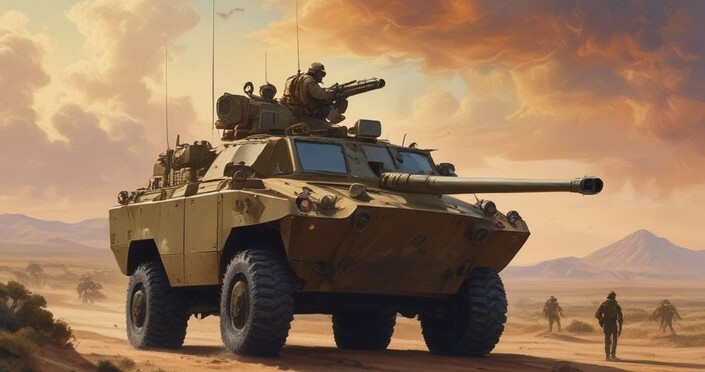Land Forces Operations

How 21st Century land forces operations are influenced by the nature of the environment in which they conduct operations.
The environment of army’s land forces operations is usually a combination of various conditions, effects and circumstances that influences the capability of the land forces commander to make decisions on the deployment of his troop. Such an operational environment involves the physical operating areas which is the land, the information that that usually shape the environment of the land forces operations and the friendly or neutral systems that are being used for any joint operation. The information environment also influences the enemy’s strategies that are going to be employed to counter the land forces operations (Keith, 2009). Writers who offer essay help online at Edudorm essay writing service notes that the operational environment can be viewed in terms of various interrelated variables of operation which include the political, economic, military, information, social and the infrastructure. These variables are used by the land forces operations to have an understanding and or to analyze the broader environment in which the operations are being carried out. These aspects are variables because the exact nature of the operational conditions, the circumstances and the influences always vary in accordance with a particular situation. In some situations, different variables will be more or less essential in different circumstances but are all commonly found at all operational environment whether the forces are taking part in support and stability operations, small-scale emergencies or a threatening major war.
Physical Environment Influence Land Forces Operations
The physical environment involves the weather and the geographical environment. Adverse weather affects all the land forces operations in that weather conditions that are severe may total prevent or drastically minimize the movements of the forces. For instance, fallen slow, severe cold weather or terrains that are very muddy always make it hard for the ground forces to move easily. Also fog that is low lying offers some concealment where direct-view surveillance and engagement of weapons is made difficult. The geographical includes the land landscape, vegetation, and the available channels, mitigates and facilities. Experts who offer research essay help at Edudorm essay writing service indicates that land can be very resistant to the movement of the forces especially where there are no constructed roads, bridges, canals or railways. It can also make the forces operations quite successful if these infrastructures are already built such that they are able to access areas where they are needed to carry out their functions (Global security,2016). The presence of these infrastructure can also be a hindrance to the operations of the army especially in the combat war where there is need for concealment to avoid the enemy detection. In such a scenario the may be a need for the destruction of the same infrastructure to hinder the movement of the enemy or to avoid the supply of weaponry and food staffs to the enemy. A case in example is in the Second World War where the Japanese army defenders Iwo Jima, an 8-square mile island made their defences stronger using 800 pillboxes and tunnels whose distance was 3 miles. This explains the increased relevance to ground forces and their formations such as pioneers and engineers and the necessary impact of barricades and entrenchment while conducting warfare operations on land. The ground itself, in land warfare, is thus a very common influence (Global security, 2016). The land shapes, facilities, channels and mitigates determine the aim of the war either in regard to political goals or in regard to the important ground that can be used as an advantageous leverage for more warfare operations. The features of a land help to create key terrain, avenues that can be used for approach, obstacles to army movement, choke points, points that can be used for observations, of a field of battle or fire. In fact land help to shape the how the warfare is going to be fundamentally carried out whether on the ground or over the ground (Darryl, 2016). After all, fighting is all about the movement, hiding and then shooting. Land determines whether the land forces operations have the ability to do all these activities. Hence, the features of land have very important effects on the forces using it as a fighting ground.
Effects of Buildings on Land Forces Operations
Urban settings are filled with buildings and roads which define predictable manmade movement corridors. Buildings can obstruct or improve land forces operations observation capability. Tall buildings can serve as commanding observation bases or for hiding anti-tank launchers that are operated individually. Such buildings also bring about elevation issues for weapon systems such as US AFV while at the same time acting as obstacles to having platforms for equipment such as the aerial ISR (Darryl, 2016). Authors who offer admission essay help at Edudorm essay writing service points that the urban settings also provide important structures that assist in military operations by enhancing underground movements. Where conflict is taking place in such an urban setting the forces can use drainage, sewer and subway transportation systems for the underground mobility which is a very important factor in warfare happening in urban areas. Use of these existing features can provide platforms for elaborate networks for defensive reasons.
Political Aspects
In addition, political aspects is another environment variable affecting the land forces operations. The political environment effects originate from the country is fighting for. The effects arise from the laid down policies on war and the objective of wars. These can better be referred to as organisational doctrines, which describe the hierarchy from which the army organisation derive its authority. The doctrines come in various levels but the higher level doctrine helps to establish principles and philosophy that supports the approach the land forces use to solve conflict ant the activities the army will engage in (British Army, 2016). Tutors who offer urgent essay help at Edudorm essay writing service acknowledges that the doctrines are different among the nations but they primarily provide a model to lay out the military instrument and a basis on which the instrument is going to be practically applied. The lower levels of the doctrines provide the practices or procedures for practically using the military instrument, in this case the land forces operations. A good example is the NATO doctrine which provides standardization regarding the development, agreement and the later proclamation of Standardisation Agreement and the Allied Publications. This doctrine offers agreed standardisation on militaries operations, their tactics and operations and procedures to be followed. Such rules and regulation affect the extent to which the ground forces operations can be done and the manner in which they can be done. The policies determine the strategy to be applied and which will finally determine whether land operations will be successful or will fail (British Army, 2016).
Technology Aspect
Another factor influencing land operation is the technology. Transmission which makes the access to technology easy takes away the ability of the conflicting sides to obtain technological dominance over one another and this technology will not manage to sanitise demand of war in a land environment. Applying low technology resolutions to overcome technological failures that are high is an important step for land operations so as to compensate the effects that a declining technological advantage has and to mitigate unavoidable conflict (U. S. Army, U. S. Marine Corps, 2010). Technology also has an influence on the accessibility of information to the land forces and their adversaries and this generally depends on the areas in which the operations are taking place. Urban areas usually have the strongest television, radio and cellular networks. Mentors who offer response essay help at Edudorm essay writing service recognizes that the land forces operations or their enemies can pass information using a number of ways with almost immediate results. Tall buildings give almost unobstructed signals that can be used to jam communication equipment, for example US PGM and the ISR platforms that are usually unmanned and this significantly reduces the military technological edge (Darryl, 2016).
Effects of Cultural Environment on Land Forces Operations
When the land forces operations come across different cultural environment, there is likely to be conflict their own culture natures and the beliefs, values and opinions of the culture in which they are operating (Colonel, 2005). Soldiers who are culture literate appreciate their own culture but are also aware how they might affect the host culture. Cultural awareness can minimize friction in the battlefield with the non-military personnel that the military forces come across. They include people outside the military organisation whose opinions, actions and political views can influence the entire mission. Instructors who offer illustration essay help at Edudorm essay writing service argues that the operations of the land forces operations will be affected by how they interact with various groups and institution in the host culture. This is quite true if the operations will interfere with the beliefs, customs and values of the society such that the society will develop a negative perception on the land forces operations. This may result to the disgruntled members of the society failing to corporate or colluding with the enemy (Barak &Paula 2008).
Conclusion
The land forces operations do not happen in a vacuum but in a platform where environmental influences which determine where the operations are going to be successful or fail. The responsibility of the forces commander is to identify how the nature of environment will affect the achievement of the desired goal.
References
Barak S., Paula H. (2008). Operational Culture for the War fighter Principles and Applications: Marine Corps University Quantico, Virginia.
British Army (2016). Army Doctrine operation.
Colonel, M. (2005). Military Cultural Education.
Darryl Ward. (2016). Operational Environment Implications of the Megacity to the US Army. Journal Article | Fe.
Global security (2016). Environmental effects on operations.1.
Global security. (2016). The Army and the Role of Land Power.1.1
Keith, A. (2009). Electronic Warfare in Operations: U. S. Army Field Manual: DIANE Publishing. 1-6
U. S. Army, U. S. Marine Corps (2010). Counterinsurgency field manual [2006]. New York: Cosimo Reports.


